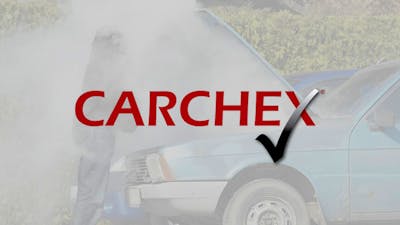Tesla Maintenance: Cost, Repairs and Schedule
Vehicle maintenance and repairs are an often overlooked expense of owning a vehicle. Electric vehicle advocates and manufacturers have told the buying public that battery electric vehicles will have a major cost advantage over vehicles with conventional gas engines and even hybrids. We are skeptical but would like very much for that to be true.
Popular Warranty Providers
Tesla is the clear leader in electric vehicles in America, and this overview will serve as a great example of what the true costs of maintaining and repairing an EV can be. As our example, we chose the Model Y, which is Tesla’s top-selling vehicle or a close second behind the Model 3, depending on your region. The Model X and Model S barely sell anymore.
In 2024, most brands offset maintenance and repair costs with included maintenance as part of the purchase price. Tesla does not offer included maintenance. In the past, Tesla offered for-purchase prepaid maintenance plans for its Model X and Model S, which were very expensive. Those have since been dropped from the company’s website. Other than tires, Tesla’s maintenance needs and costs are very minimal. However, the tire costs are high, and the replacement intervals are very short.
In this story, we will explain the cost to maintain and repair a Tesla up to and beyond 100,000 miles. You can find the full list of maintenance needs for a Tesla here on the company’s website. It “fits on one page.”
Tesla’s Model Y has a 100,000-mile maintenance cost estimate between $8,250 for base trims and $15,000 for the performance trim. This does not include repairs. By comparison, a Toyota Highlander in the Car Talk fleet had a 100,000-mile maintenance and repair cost of $14,029. A Honda Accord had a 100,000-mile maintenance and repair cost of $7,684. If there is a cost advantage to Tesla with regard to maintenance and repair, we cannot find it.
How Did We Obtain Our Cost Estimates For Tesla Maintenance?
The Tesla price information included in this story came directly from Tesla. We phoned the Peabody service center in Massachusetts and asked for the prices. The Tesla employee who took our call was entirely open and forthright. He didn’t ask for our VIN or push us to reveal any information, such as our email or phone number. By contrast, getting other brands' dealers to tell you what they charge for service is much more difficult and always very obscurely answered.
To ensure the information we got from Tesla was accurate and not some sort of lowball estimate, we took to the online Tesla clubs to see what owners were reporting. The maintenance costs we obtained lined up closely with what owners have reported in past posts.
Tesla also confirmed to us that the company no longer offers prepaid maintenance plans. These have been discontinued, and the Tesla retailer in our area will not take your money even if you insist you want one. Contrast that with the hard upsell you get from other brands when you buy a new car.
We used the top-selling Model Y crossover as our example vehicle. There are two basic types of Model Y. Performance and base, which Tesla calls the “Long Range.” They have the same maintenance schedule, but it should be noted that the tire costs do differ quite a bit. Please see our section below on Tesla tire costs for details.
Tesla Model Y Recommended Maintenance Schedule
| Maintenance | Interval (Per Tesla Website) | Cost (Per Tesla Peabody,MA.) |
|---|
Tesla Tire Cost and Maintenance
Teslas use special tires designed to handle added weight. Many also have acoustic foam inserts to reduce noise. Couple these design parameters with large diameters and low profiles (small sidewalls), and you have a recipe for a very expensive tire.
Tesla owners have always reported that they find the tires wear out faster than on a typical car. Yes, even faster than on a conventional luxury/performance car. Our past experience with this topic was solidly confirmed by the Tesla Peabody service department employee. In a nutshell, he told us that Tesla vehicles (specifically the Model Y) wear out tires more quickly than conventionally-powered vehicles. He also confirmed our own research that the tires themselves are more expensive for the reasons listed above.
Tesla’s customer service employee also emphasized that an owner need not come to a Tesla service center for tire-related maintenance, repair, or replacement. He said that any tire retailer can handle the job, possibly at a lower cost. What madness is this? A vehicle “dealer” telling a customer to look locally for a better deal!?
Here are the tire replacement interval estimates based on this Tesla employee’s experience.
Model Y Base (19” tires) * Typical change interval 25K to 35K miles. Expected Min 15K, expected Max 45K * Approximate cost for replacement - $1,500 - $2,000 plus $275 Alignment
Model Y Performance (21” tires) * Typical change interval 15K to 20K miles. Expected Min 5K, expected Max 25K * Approximate cost for replacement - $1,900 - $2,500 plus $275 Alignment
Let’s do some quick math. Let’s choose a Model Y base with a tire replacement interval in the middle of the range the Tesla employee suggested we might see. Here is the cost for tires at 100,000 miles:
- $1,750 + 255 = $2,025 x 3 = $6,075
- 13 rotations at $65 = $845
- Total tire costs = $6,920
This cost is not that unreasonable, but it is about 50% higher than one might expect to pay for tires on a RAV4 Hybrid.
Now Let’s look at a Tesla Model Y Performance.
- $2,250 + $275 = $2,525 x 5 = $12,625
- 13 rotations at $65 = $845
- Total tire costs = $13,470
This cost is triple what one would expect to pay for a conventionally-powered crossover the same size as a Model Y.
Tire-related maintenance and replacement costs for Tesla vehicles are so much more than with a conventional vehicle the same size, it negates much of the cost savings the Tesla’s low-maintenance powertrain design offers.
Tesla Brake Maintenance Cost
Vehicles with regenerative braking do not wear out brake pads and rotors as rapidly as conventionally-powered vehicles do. Tesla is battery-electric, and the Tesla contact we spoke to told us that Tesla brakes typically need replacement between 75,000 and 100,000 miles. When brake rotor and pad replacements are needed, expect to pay near the higher end of the price range for this work. Best to budget $750 to $1,000 per end, about what you would pay a premium brand’s dealer to replace the brakes on a performance crossover model and trim.
Tesla vs. Conventional Vehicles - Typical Costs For Routine Maintenance Jobs
Tesla vehicles don’t need as much maintenance as conventional vehicles. Here is a comparison showing some approximations of the costs of a conventional vehicle to a Tesla.
| Maintenance Job | Typical Conventional Vehicle | Tesla Vehicle |
|---|
Common Tesla Vehicle Repair Examples
Modern battery-electric and plug-in hybrid vehicles don’t have starters and alternators. You won’t ever have to repair or replace these components in a Tesla. However, many parts in a Tesla are just like the ones in a conventional car or perhaps even more expensively designed. Here are some examples of commonly repaired or replaced items and a contrast and comparison between a Tesla and a conventional vehicle.
| Common Repair Type | Approximate Cost Conventional Vehicle | Approximate Cost Tesla Vehicle |
|---|
Common Tesla Problems and Repairs
According to both Tesla owner social media posts and Consumer Reports survey results, Tesla vehicles do have some common trouble areas. However, the Model Y is so new there have been few out-of-pocket repair costs. Many owners post images showing misaligned body panels, goofed-up interior trim, and paint defects. Tesla nearly always offers to either fix the issue after delivery or offers a goodwill payment of some sort to satisfy buyers.
One area of concern has been Tesla’s large main infotainment and vehicle control screen. Tesla has been at odds with some owners of Tesla vehicles with screens that failed. The general argument from Tesla was that the screens were a “consumable item.” NHTSA called BS on that and asked Tesla to remedy the situation at no cost to consumers. The recall was on Tesla’s oldest models, the low-volume Model X and Model S.
Tesla is a brand also known to have glitches that can be remedied using over-the-air updates. This was novel at one time, but now all brands offer OTA updates to resolve a wide variety of issues. Tesla is unique in that it has even solved braking problems this way.
Is a Tesla Extended Warranty Available?
Car Talk has a comprehensive online library of information on extended warranties. You could say we are the industry leader in this regard. During our research, we found that many hybrid and electric vehicle systems were excluded from coverage by third-party extended warranty companies.
Tesla once offered to sell owners of low-volume Model X and Model S cars an extended warranty policy. You can find details on the Tesla website right here. However, the popular Model 3 and Model Y were never included. Tesla is moving away from offering extended warranties.
The biggest fear of any EV owner is a powertrain problem out of warranty. Tesla’s warranty varies by vehicle model and trim (which is weird). The Model Y’s drive unit has a warranty lasting 8 years or 120,000 miles, whichever comes first, with minimum 70% retention of battery capacity over the warranty period. That is a very long coverage period, and in our opinion, negates the need for an extended warranty.
Our Recommendations
If you are a fan of Tesla vehicles and their novel way of doing business, by all means, shop for one. We would suggest cross-shopping the Ford Mustang Mach-E and Jaguar I-Pace with the Tesla Model Y, the BMW i4 with the Tesla Model 3 Performance, and the Hyundai Kona EV with the lower-tier Model 3 cars. Both BMW and Hyundai offer three years of included maintenance. Jaguar offers five years of included maintenance.
Our Methodology For Best Warranty Providers
Car Talk has spent the last two years diving deeply into the warranties industry for the benefit of our readership and long-time listeners. Our process for deciding on the best warranty companies is exceptionally thorough, involving in-depth research and our unique secret shopper initiative. We compiled over 50 data points across all reviewed companies to refine and inform our selection process. Car Talk reviewed the following important criteria for each company:
- Consumer Satisfaction: Cross-referencing multiple trusted resources to pull our fair and balanced customer reviews.
- Cost: Utilizing our secret shopper initiative, we got comparable quotes across all companies so we can validly compare pricing.
- Coverage and Offerings: Our research team delved into the coverage and offerings for each company, comparing what is available, including extras and discounts.
- Official Ratings: We consulted a wide range of verified review sites to extrapolate a ratings score for each.
Read more on the Best Warranty Companies in the industry here.










